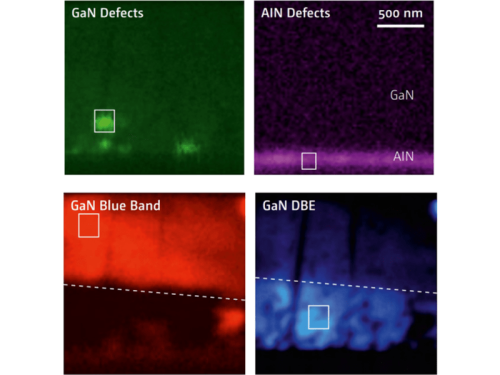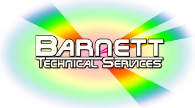Applications on Hyperspectral Mapping with high Spatial Resolution for Optoelectronic Devices

Find out how CL can defect defects in optoelectronic materials
| Field | Material | Technique |
|---|---|---|
| Fundamental and applied research | Nitride semiconductors | Hyperspectral imaging |
Abstract
Gallium nitride (GaN) is a widely used material in optoelectronic devices such as Light Emitting Diodes (LEDs). LED structures are mostly grown by epitaxy on sapphire substrates but, for cost reasons, silicon emerges as a possible contender.
Nevertheless, the large misfit and the difference in coefficient of thermal expansion between silicon and the nitrides lead to numerous dislocations and possible cracks. They usually appear during the cooling stage in the growth process. Since both cracks and dislocations are detrimental for LED applications, it is crucial to determine local defect concentration and other features like doping and strain.


The cathodoluminescence (CL) technique constitutes a fast and highly relevant way to investigate GaN properties. The distribution of non-radiative defects such as dislocations can be directly visualized. The energy of below band gap emission lines allows us to identify point defects.
CL hyperspectral maps give relevant information on the spatial variation of strain, doping, growth direction and carrier concentration. In practice, the spatial resolution in CL can be strongly improved by constraining the size of the interaction volume between the electron beam and the sample. The use of thin objects such as TEM samples happens to overcome this physical limitation. It significantly decreases the lateral size of the interaction volume from 550 nm (at a beam energy of 10 keV into GaN) to less than 30 nm.
A specific cryogenic sample holder compatible with TEM samples has been designed to perform measurements on the Attolight CL microscope at low temperature (down to liquid He).
Nevertheless, the small probed volume in the sample may significantly reduce the collected signal and thus limit the measurement resolution. The optimized light collection of the Attolight CL system perfectly overcomes this difficulty. It allows to carry out highly resolved hyperspectral mapping (with a very high signal-to-noise ratio) within short durations on cross-sectional TEM samples. Such measurements are not limited to GaN and can be extended to many other light emitting materials.
The protocol, relying on the Attolight CL microscope, allows for:
- Good visualization of dislocation network and correlation with TEM images acquired on the same area of the sample.
- Spatial luminescence mapping of the different constituents of the stack (AlN, GaNs, quantum wells…).
- Estimation of the local strain and doping around dislocations and interfaces through the energy shift in CL spectra.
- Identification and spatial distribution of point defects.




Source: Attolight
